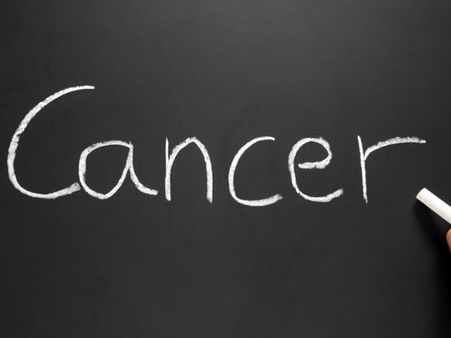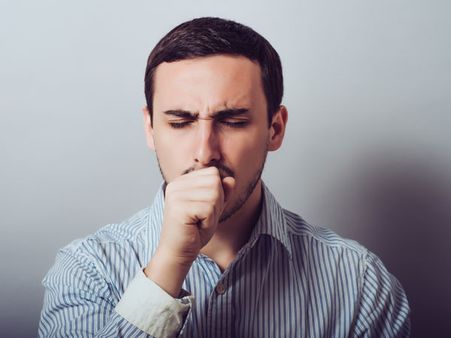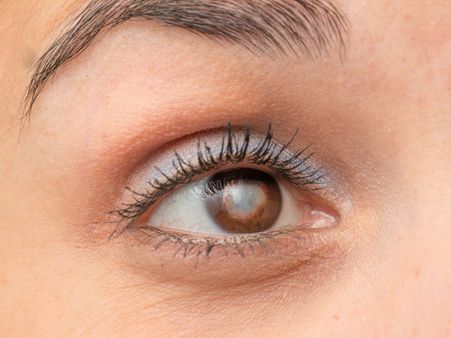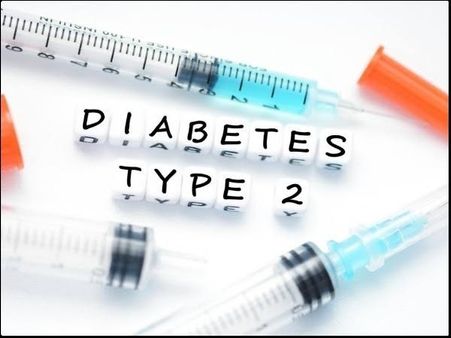Just In
- 20 min ago

- 5 hrs ago

- 9 hrs ago

- 13 hrs ago

Don't Miss
- Movies
 Do Aur Do Pyaar OTT Release Date & Platform: When & Where To Watch Vidya Balan’s Film After Theatrical Run?
Do Aur Do Pyaar OTT Release Date & Platform: When & Where To Watch Vidya Balan’s Film After Theatrical Run? - Sports
 UFC 302: Makhachev vs. Poirier Date, Card, Broadcast & Ticket Details
UFC 302: Makhachev vs. Poirier Date, Card, Broadcast & Ticket Details - Finance
 Wipro Q4 Results Preview: Weak Demand Likely To Drag Revenue Sequentially, EBIT Margins Seen Stable
Wipro Q4 Results Preview: Weak Demand Likely To Drag Revenue Sequentially, EBIT Margins Seen Stable - News
 BRS Chief K Chandrasekhar Rao Slams BJP, Says K Kavitha's Arrest Is Vendetta Politics
BRS Chief K Chandrasekhar Rao Slams BJP, Says K Kavitha's Arrest Is Vendetta Politics - Automobiles
 Aprilia RS 457 Accessories: A Detailed Look At The Prices
Aprilia RS 457 Accessories: A Detailed Look At The Prices - Education
 Karnataka SSLC Result 2024 Soon, Know How to Check Through Website, SMS and Digilocker
Karnataka SSLC Result 2024 Soon, Know How to Check Through Website, SMS and Digilocker - Technology
 Nothing Ear, Ear a With ANC, Up to 42.5 Hours of Battery Launched; Check Price and Availability
Nothing Ear, Ear a With ANC, Up to 42.5 Hours of Battery Launched; Check Price and Availability - Travel
Telangana's Waterfall: A Serene Escape Into Nature's Marvels
No Smoking Day 2022: List Of Diseases Caused By Smoking
No Smoking Day is observed every year on the second Wednesday of March to create health awareness about the harmful effects of smoking among people and intends to help smokers who want to quit smoking. In 1984, No Smoking Day was observed for the first time.
The theme of No Smoking Day 2022 is 'quitting smoking doesn't have to be stressful.'
The anti-smoking campaigns aim to help 100 million people quit tobacco use through various initiatives and digital tools. This can help create healthier conditions that promote tobacco cessation through:
- supporting robust tobacco cessation policies
- improving access to cessation services
- raising awareness about the tactics of the tobacco industry
- supporting people who want to quit tobacco via Quit and Win initiatives.
The never reducing number of deaths caused by cigarette smoking is the only valid proof one needs to understand the dangers of the habit of smoking. Tobacco use in any form is harmful. Despite several measures taken up by the government and other non-governmental organizations to curb tobacco usage, still, its usage has remained all-time high.

The nicotine content in the cigarettes gets absorbed and penetrates the bloodstream via lungs and stimulates the electrical activity in the brain and also has a soothing effect especially when stressed. Of all the forms of tobacco, studies have shown that smoking accounts for almost 25 per cent of deaths annually in the age group of 30-60 years globally [1][2].
That is, smoking claims the lives of over seven million people each year and those around 900,000 non-smokers die each year, due to the exposure to the second-hand smoke. It should be understood that tobacco use, especially smoking is one of the major risk factors for various diseases [3].
In the current article, we will take a look at some of the most common health problems and diseases caused by smoking.

1. Cancer
Smoking is the number one cause of cancer and death from cancer. Lungs, mouth, throat and gullet cancer are caused by the carcinogens or cancer-causing agents present in cigarettes. Smoking causes almost 90 per cent of lung cancer cases [4]. It also causes bladder, pancreas, cervical, kidney and oesophagus cancer [5].
Smoking is the number one cause of bladder cancer, and increases the risk of developing liver cancer and cervical cancer. Studies also point out that those who smoke are more likely to die from colorectal cancer [6][7].

2. Chronic Obstructive Pulmonary Disease (COPD)
Chronic obstructive pulmonary disease (COPD) which includes chronic bronchitis and emphysema are caused by smoking. It blocks the airflow and causes difficulty in breathing. If you are a long-term smoker, the greater your risk will be of affecting severe COPD. The final stage of COPD is death from being unable to breathe [8].

3. Cardiovascular Diseases
Smoking results in death caused by diseases affecting the heart, blood vessels of the heart and other blood vessels [9]. Smoking increases cholesterol levels, causing cholesterol and other fats to be deposited in the arteries. This blocks the arteries and causes blood clots, increasing the risk of cardiovascular diseases [10].

4. Reproductive Health Issues
Smoking also adversely affects reproductive health, causing infertility, pre-term delivery, miscarriage, stillbirth and sudden infant death syndrome (SIDS) [11]. Men who frequently smoke have a greater risk of suffering from erectile dysfunction [12].
Dr. Alex points out, "A male smoker can affect the fertility of his partner. Also smoking even reduces the IVF success rates."

5. Cataracts
An ophthalmological condition, cataracts develop when the lens of the eye becomes opaque over time, resulting in loss of vision [13]. Studies link smoking with this condition and assert that smoking can increase the risk of cataracts [14].

6. Type 2 Diabetes
Reports and studies suggest that smoking is a direct cause of type 2 diabetes. Individuals who smoke have a 30-40 per cent increased risk of developing the condition [15]. Also, diabetics who smoke will find it difficult to manage the condition, which may lead to increased chances of heart disease, ulcers, infections and amputations [16].
Dr. Alex adds, "The risk of developing diabetes increases with the number of cigarettes smoked."

7. Increased Infections
The risk of infections affecting your upper respiratory tract and lung increases. Smoking prevents bacteria and debris from being cleared from the lungs and respiratory tracts, resulting in sinusitis, bronchitis and pneumonia [17].

8. Rheumatoid Arthritis
Studies have pointed out that smoking increases your chances of developing rheumatoid arthritis [18]. The condition causes inflammation in the joints, pain, deformities and immobility [19].

9. Aortic Aneurysm
Aortic Aneurysm is an abnormal bulge in the wall of the major blood vessel (aorta) that carries blood from your heart to your body [20]. Aneurysms are more common in men than in women and the risk for an aortic aneurysm increases even more in men who smoke [21].

On A Final Note
Inhaling secondhand smoke also causes lung disease in non-smoking adults, and raises the risk of heart disease by 25-30 per cent [22]. Children exposed to cigarette smoke are at a greater risk of SIDs, severe asthma, bronchitis and passive smoking even decrease the growth of their lungs.
Quitting can help reduce the risk of suffering from diseases caused by smoking, as well as improving your overall health. Researches have found that every 7 minutes, a death is caused due to tobacco use [23].

Frequently Asked Questions
Q. What are 4 respiratory diseases that are caused by smoking?
A. Chronic bronchitis, Emphysema, Lung cancer and other types of cancer (nose, voice box, sinus and throat).
Q. Is smoking a disease?
A. No. But it can lead to several diseases.
Q. Why do people smoke?
A. Studies point out that people have reported that smoking gives them a pleasurable feeling.
Q. How much cigarettes can kill you?
A. According to a study published in the Archives of Toxicology, the nicotine content in five cigarettes is enough to kill an average adult if ingested whole.
Q. What age do most smokers die?
A. An estimated 23 per cent of consistent heavy smokers never reach the age of 65 and life expectancy decreases by 13 years on average for heavy smokers compared to people who have never smoked.
Q. Will one cigarette kill you?
A. It may not kill you but it is enough to damage the body and can lead to serious illnesses.
Q. Are there any benefits to smoking?
A. Although not a 'benefit' - smoking suppresses appetite.
Q. Is 1 cigarette a day bad?
A. While smoking one cigarette a day may reduce the risk of heart disease and stroke by about half compared to smoking a pack, that one-a-day risk is still significant.
Q. How many cigarettes a day is OK?
A. Nil. However, certain findings point out that smoking just a few cigarettes per day is "relatively safe."
Q. Can smoking kill a baby?
A. Smoking during pregnancy or exposing pregnant women to smoke can lead to many serious health problems for an unborn baby.
Q. Can 1 cigarette make you addicted?
A. Yes. Inhaling from just one cigarette can lead to nicotine addiction.

-
 insyncWorld No Smoking Day 2024: Slogans, Quotes, Images, Wishes, To Share On This Day And Spread Awareness
insyncWorld No Smoking Day 2024: Slogans, Quotes, Images, Wishes, To Share On This Day And Spread Awareness -
 healthWhat Will Happen To Your Body If You Quit Smoking? Timescale Of Health Benefits
healthWhat Will Happen To Your Body If You Quit Smoking? Timescale Of Health Benefits -
 healthThis Social Issue Could Be The Next ‘Epidemic,’ It Is Worse Than Smoking 15 Cigarettes A Day
healthThis Social Issue Could Be The Next ‘Epidemic,’ It Is Worse Than Smoking 15 Cigarettes A Day -
 healthWant To Live Longer? Embrace These 8 Healthy Habits Today
healthWant To Live Longer? Embrace These 8 Healthy Habits Today -
 pregnancy parentingWorld No Tobacco Day: How Does Secondhand Smoking Affect Children?
pregnancy parentingWorld No Tobacco Day: How Does Secondhand Smoking Affect Children? -
 healthMyths vs Facts: Is Sitting The New Smoking?
healthMyths vs Facts: Is Sitting The New Smoking? -
 healthWhat’s The Best Age To Quit Smoking? How Much Money Can You Save If You Quit?
healthWhat’s The Best Age To Quit Smoking? How Much Money Can You Save If You Quit? -
 healthIs Vaping More Harmful Than Smoking Cigarettes?
healthIs Vaping More Harmful Than Smoking Cigarettes? -
 disorders cureWorld Kidney Day 2023: Kidney Cancer: Know Causes, Symptoms, Signs & Treatment
disorders cureWorld Kidney Day 2023: Kidney Cancer: Know Causes, Symptoms, Signs & Treatment -
 healthNew Zealand Will Ban The Sale Of Tobacco For The Benefit Of Future Generations
healthNew Zealand Will Ban The Sale Of Tobacco For The Benefit Of Future Generations -
 wellnessSmoking Linked To Thicker And Weaker Heart, Says New Study
wellnessSmoking Linked To Thicker And Weaker Heart, Says New Study -
 wellnessSmoking, Alcohol & High BMI Are Primary Risk Factors For Cancer Death: Study
wellnessSmoking, Alcohol & High BMI Are Primary Risk Factors For Cancer Death: Study


 Click it and Unblock the Notifications
Click it and Unblock the Notifications



